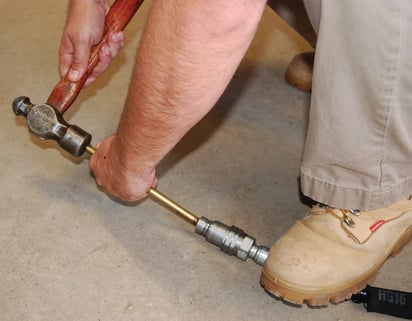Quick disconnect fittings provide a convenient and efficient way to connect and disconnect fluid lines. Used across a myriad of industries and available in multiple sizes and types, misapplication of quick disconnects will cause problems if not used properly. Here, we outline five conditions under which quick disconnects are bound to fail and suggest a better solution for each application.
1. Vibration
The problem: Standard sleeve lock quick disconnects used in applications involving vibrations can develop brinelling when connected directly to the tool. The term “brinelling” means dimples or grooves worn into the shoulder of the male half by locking balls in the female half.
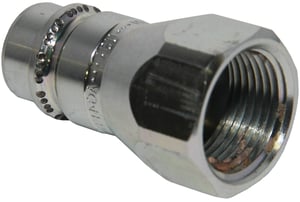
The solution: In applications that involve vibration or high impulse, we recommend a whip hose between the tool and quick connect to help buffer the vibration. Thread together quick connects, like the VEP and WS series, are typically a good fit for these applications.
The term "brinelling" is named after the Swedish metallurgist Johan August Brinell, 1849-1925, who developed a test that measures the relative hardness of metals and alloys by forcing a 10mm steel ball into a test piece with a 3,0000kg load for 30 seconds.
2. Side Load
The problem: Side loading a quick disconnect causes heavy brinelling on the top groove of the plug or valve that damages, and will often crack, the coupling sleeve and valve.
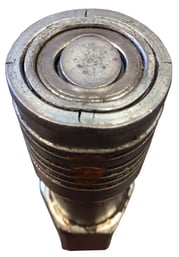
The solution: Dixon recommends always mounting quick disconnects in the direction of the load.
3. Contamination
The problem: Dirt and debris can contaminate any system, causing damage to the couplings and other components in the assembly.
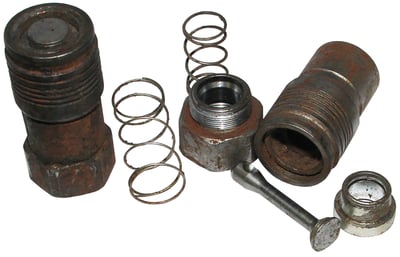
The solution: Always use dust caps and plugs when couplings are not connected and remove dirt prior to connecting couplings. Dixon offers caps and plugs for most hydraulic quick disconnect series.
4. Rotation
The problem: Full rotation with a quick disconnect will cause cold forming of a nipple groove and score lines in the coupler leading to separation.
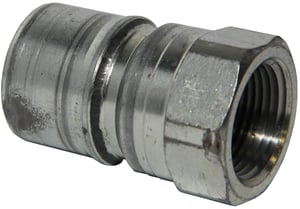
The solution: Always use a swivel when full rotation is needed.
5. Human Intervention
The problem: Using hammers to release pressure in a hydraulic line can cause immediate damage to any fitting.
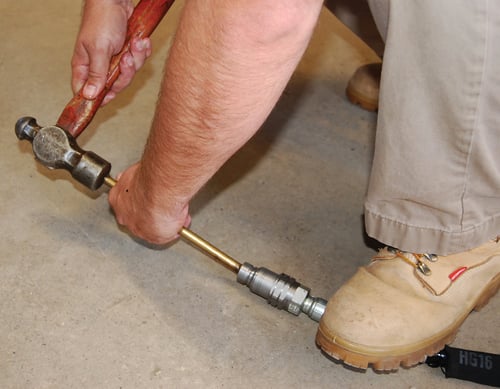
The solution: Dixon offers the HTE-Series, HTZ Series and other thread together options for applications that require connect under pressure.
Do you have questions about your application? We would love to help. 
